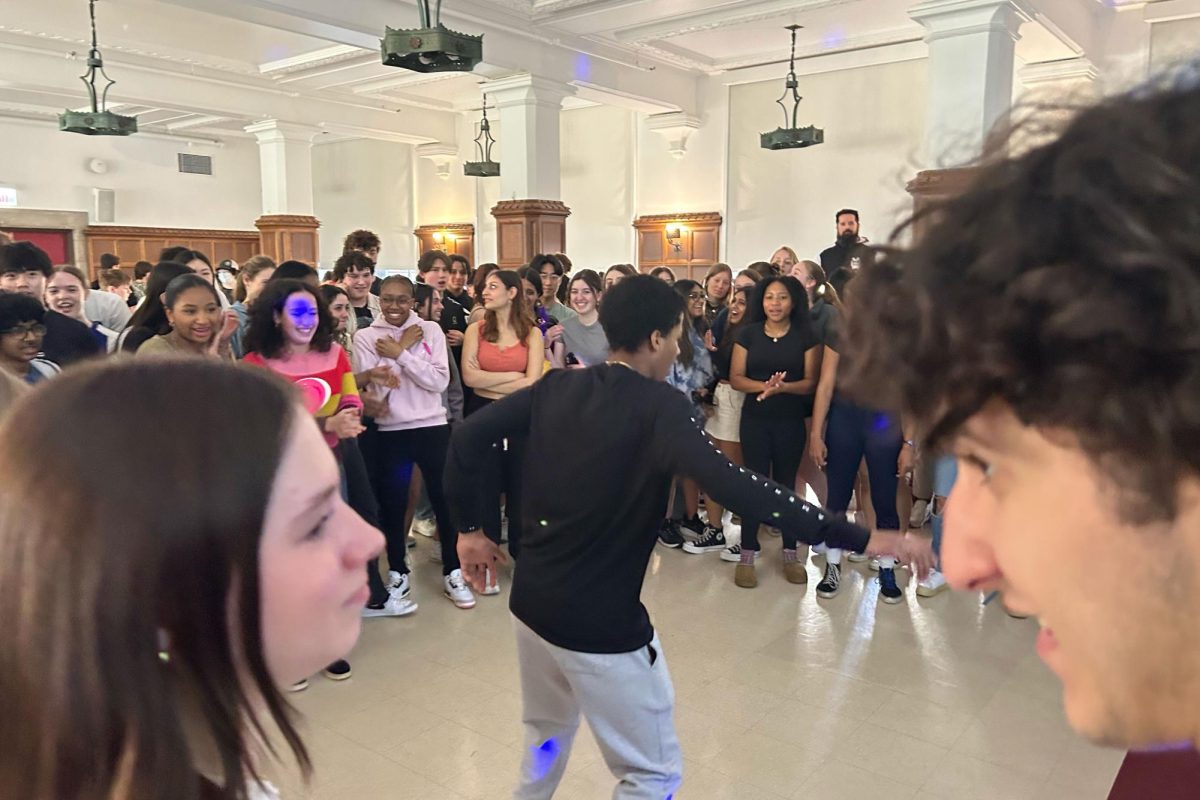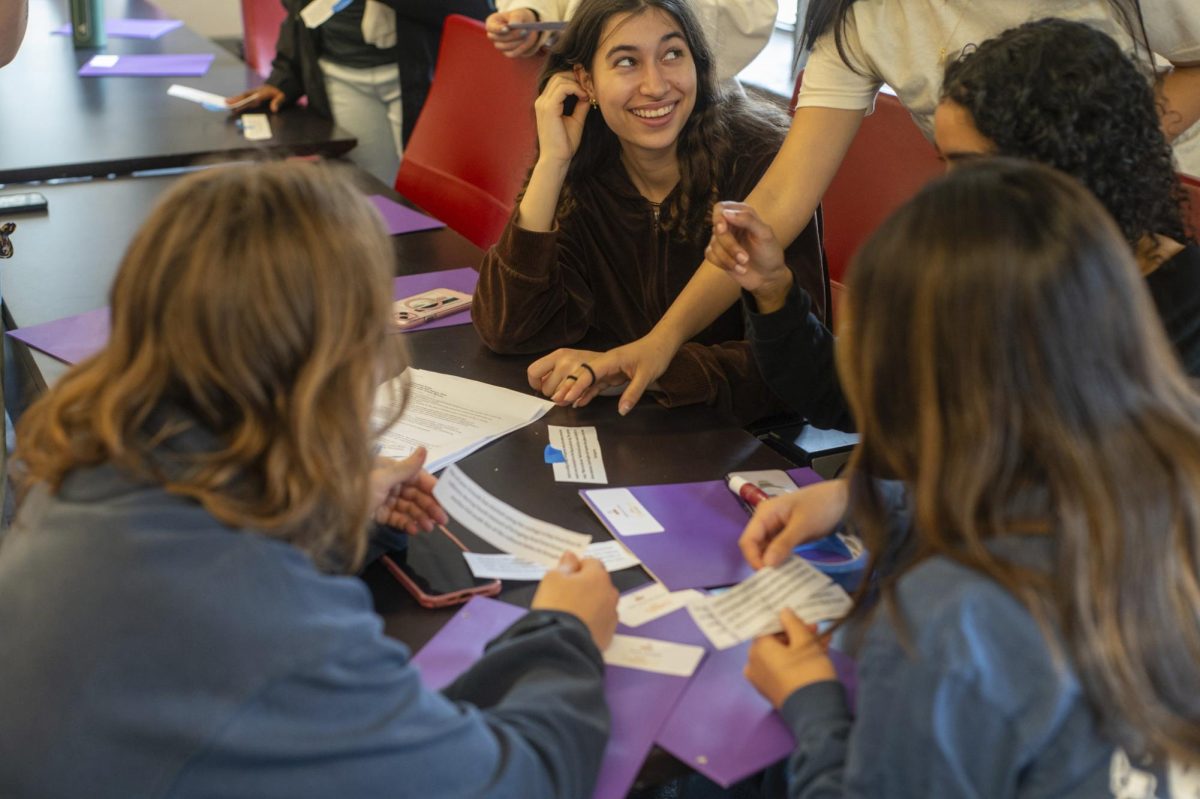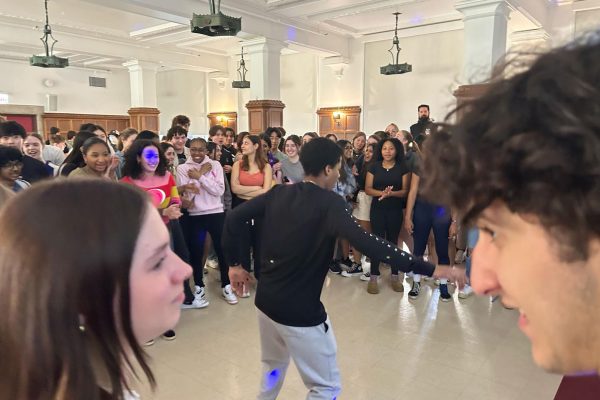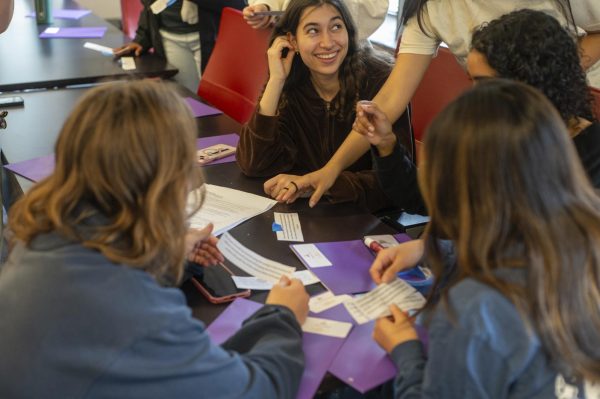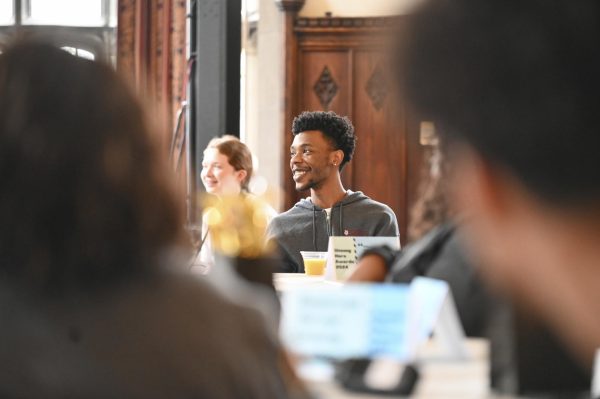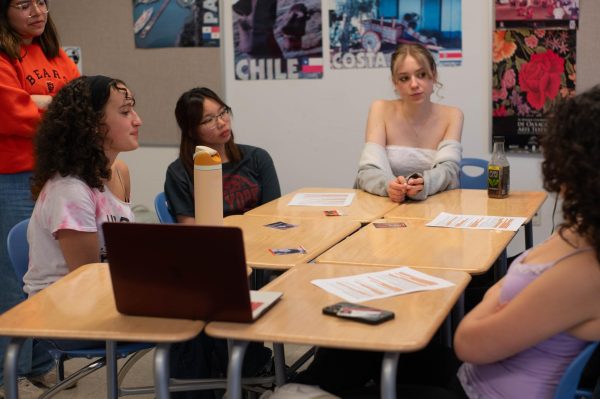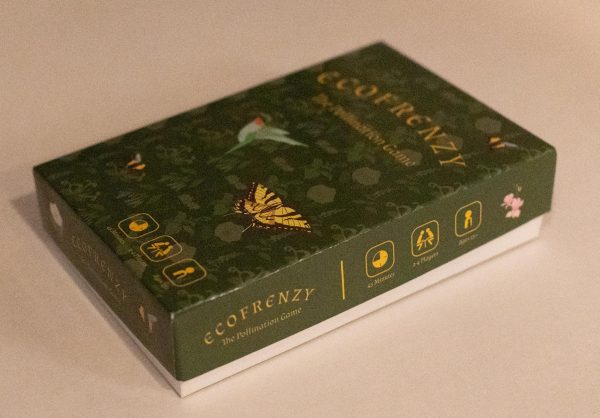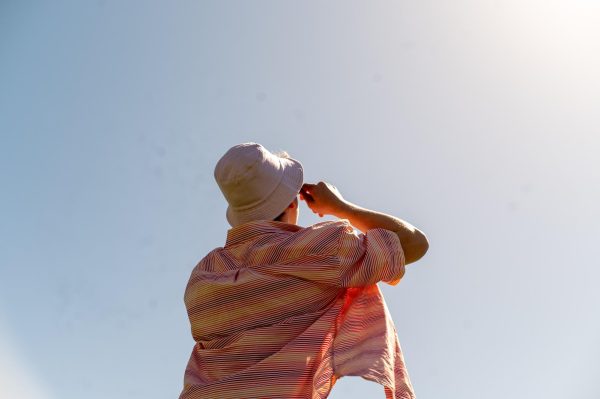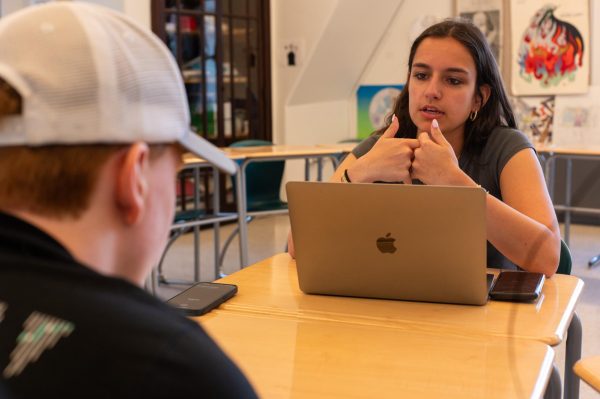Teacher tours Morocco, enriches curriculum
Susan Shapiro’s trip to study Muslim-Jewish relations will influence her teaching of religion
March 11, 2019
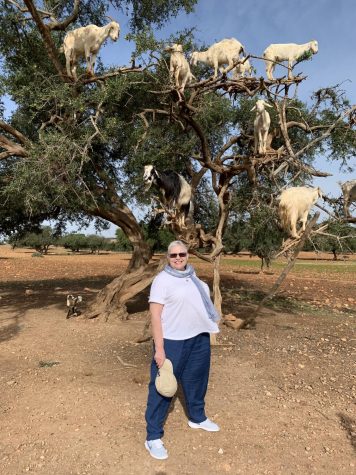
GOATS IN TREES. Susan Shapiro stands in front of an argania tree filled with nut-eating goats while on her trip to Morocco. Ms. Shapiro traveled for 10 days and explored three Moroccan cities to study Muslim-Jewish relations throughout history. She learned about the plurality of culture, which she plans to apply to her classes.
Traveling, learning and exploring, history teacher Susan Shapiro toured Morocco Feb. 15-25 to understand the North African Holocaust experience and to broaden the curricula of her classes.
Ms. Shapiro explained that the purpose of her visit was to study Muslim-Jewish relations throughout history, and how those relations applied to the Moroccan experience of the Holocaust. Her tour, which was guided by the United States Holocaust Memorial Museum, took her to the Moroccan cities of Casablanca, Fez and Marrakesh. This is what I dream of. People learning to respect one another for who and what they are. There isn’t this ideology of enemies. — Ms. Shapiro
“Morocco is a fascinating country that has built a kind of pluralistic society unlike anything else I have seen in the entire world,” Ms. Shapiro said. “There are elements of Jewish, Muslim and Berber iconography immediately visible everywhere you go.”
Ms. Shapiro was first introduced to this cultural pluralism the night she arrived in Morocco at a cooking class, where she learned to cook a dish called tajine.
“The recipe we were working with had elements of traditional Berber, which was the tajine itself. Jewish elements, it had lots of garlic, and Muslim elements as well,” Ms. Shapiro said.
In order to be further exposed to the Moroccan melting pot of culture, Ms. Shapiro visited walled Jewish communities, known as mellahs. Moroccan sultans historically placed these mellahs next to their palaces to ensure the protection of Jewish people, while also maintaining uninterrupted trade.
“This is what I dream of,” Ms. Shapiro said about Moroccan society. “People learning to respect one another for who and what they are. There isn’t this ideology of enemies.”
Today, the mellahs are largely inhabited and maintained by the majority Muslim population and contain only remnants of Jewish culture such as aged cemeteries and traditional synagogues.
Ms. Shapiro took similar trips to study Jewish culture in other countries such as Turkey, Egypt and China.
Morocco differed from her previous trips because North Africa is the only place outside Europe that participated in the Holocaust during World War two. Ms. Shapiro said that observing sites of Nazi occupation helped to give her a better understanding of how the Holocaust was spread into North Africa.
Even though Ms. Shapiro read about the mellahs and other Moroccan sites of cultural significance before her trip, those books did not stop her from being pleasantly surprised by the Moroccan people.
“Everyone I met from the ambassadors to the little brats on the street, spoke at least two languages and sometimes three,” Ms. Shapiro said. “I was dealing with people who were so much more linguistically cosmopolitan than I was. I loved it!”
Learning opportunities such as this trip allow Ms. Shapiro to adapt and improve her curriculum by adding unique new perspectives on the Jewish experience.
“It will become part of my conversation of the Holocaust,” Ms. Shapiro said, “but more importantly it will become part of my conversation about religion.”






